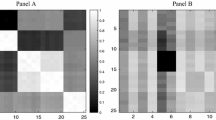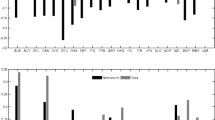Abstract
Since the financial crisis in 2008, factor investing has attracted the attention of investment managers and asset owners. A factor-based investment portfolio can enjoy effective diversification and acquire factor risk premiums at lower cost than active managers can. In equity investments, “smart beta” investing has been established as a common investment style and the multifactor strategy has become the most popular in recent years. This study makes an additional contribution to empirical research for risk-based asset allocation in multifactor investing. We verified the effectiveness of the factor risk parity (FRP) strategy by constructing active equity FRP portfolios for four stock markets, Japan, the United States, United Kingdom, and Euro countries. For the Japanese market, four factors considered to be effective in the market were adopted for constructing FRP portfolios. For the other markets, we constructed FRP portfolios by equalizing factor risk contributions between the cyclical and defensive factors. We found that the FRP strategy is a prospective method for capturing factor risk premiums, since it can adequately allocate risk to factors that contribute positive returns in the active FRP portfolios.






Similar content being viewed by others
Notes
Currently, numerous factor indexes are provided by various index vendors, such as the FTSE Russell, MSCI, and S&P Dow Jones indexes. Each index vendor provides single-factor indexes focusing on style factors, such as value, size, momentum, low volatility, yield, and quality. Multifactor indexes that combine single factors based on each unique method are also supplied by such index provider.
We call a multifactor portfolio built by this method an FRP portfolio.
We analyze countries in the European Economic and Monetary Union (EMU) as the Euro stock market. The EMU includes Austria, Belgium, Finland, France, Germany, Ireland, Italy, the Netherlands, Portugal, and Spain.
Kaya et al. (2012) stated that only 4% of the determinants of price movements are explained by macroeconomic factors for the US stock and bond markets, where they adopt three economic growth and two inflation variables as factors. The authors concluded that it is difficult to use macroeconomic variables as factors, since sources of risk must be totally identifiable, and idiosyncratic risks need to be negligibly small and uncorrelated.
See Bender et al. (2013) for comprehensive research on equity factor models.
Even though these studies did not label their portfolios as FRP portfolios, we include these strategies in FRP, since the portfolio proposed by Meucci (2009) can be considered a risk parity strategy among principal component factors.
We define “active” as the comparison against a benchmark index or portfolio, while we use “excess” as that against a risk-free rate.
We use fundamental factors extracted from factor indexes, with the result that the factor loading matrix \(\varvec{A}\) can be uniquely determined. It must be noted that if we use PCA-based factors, we need to take care of the uniqueness of factor loading matrix.
Here, risk contributions are equalized among all factors, but it is also possible to select factors to allocate risk and equalize risk contributions among them.
The factor grouping in this study is based on Gupta et al. (2014), who reported that value, size, and momentum are pro-cyclical factors that perform well when macroeconomic conditions are favorable, while low volatility, yield, and quality are defensive factors that outperform the market when economic conditions are depressed.
We use the function solnp of the R package Rsolnp, which is a popular SQP solver for a constrained non-linear optimization problem.
For example, see (Pesaran 2015, Chap. 26).
Since our objective is to construct FRP portfolios using fundamental factors, testing the strictly exogenous assumption on the multifactor model together with its validity, as addressed in Fama and MacBeth (1973), is beyond the scope of our study and we leave it for future work. Construction of FRP portfolios based on appropriate multifactor models incorporating heteroskedasticity and serial correlation are also left for our future research.
It should be kept in mind that the obtained performance values may vary according to the result of the optimal active weight vectors, which depend on the starting values of the numerical optimization. The results are also be affected by the estimates of the covariance matrix, the constraints on the optimization, such as active weights, and the lower and upper bounds for AFEs.
While the performance of value and yield in the UK market was lackluster during the observation period, Dimson et al. (2017) verified that these factors also generated positive risk premiums in a long-term analysis of global stock markets.
In the FRP portfolio construction method used in this study, risk contributions were equalized between the two factor groups. However, it should be noted that the factor risk contributions among the three factors in each group were not equalized.
References
Alighanbari, M., & Chia, C. P. (2016). Multifactor indexes made simple: A review of static and dynamic approaches. Journal of Index Investing, 7(2), 87–99.
Ang, A. (2014). Asset management: A systematic approach to factor investing. Oxford: Oxford University Press.
Ang, A., Goetzmann, W. N., & Schaefer, S. M. (2009). Evaluation of active management of the Norwegian government pension fund–global. www.regjeringen.no
Bender, J., & Wang, T. (2016). Can the whole be more than the sum of the parts? Bottom-up versus top-down multifactor portfolio construction. Journal of Portfolio Management, 42(5), 39–50.
Bender, J., Briand, R., Nielsen, F., & Stefek, D. (2010). Portfolio of risk premia: A new approach to diversification. Journal of Portfolio Management, 36(2), 17–25.
Bender, J., Briand, R., Melas, D., & Subramanian, R. A. (2013). Foundation of factor investing. MSCI Research Insight.
Bender, J., Hammond, P. B., & Mok, W. (2014). Can alpha be captured by risk premia? Journal of Portfolio Management, 40(2), 18–29.
Bhansali, V., Davis, J., Rennison, G., Hsu, J., & Li, F. (2012). The risk in risk parity: A factor-based analysis of asset-based risk parity. Journal of Investing, 21(3), 102–110.
Blitz, D. (2012). Strategic allocation to premiums in the eqiuty market. Journal of Index Investing, 2(4), 42–49.
Blitz, D. (2015). Factor investing revisited. Journal of Index Investing, 6(2), 7–17.
Chen, N. F., Roll, R., & Ross, S. A. (1986). Economic forces and the stock market. Journal of Business, 59(3), 383–403.
Choueifaty, Y., & Coignard, Y. (2008). Toward maximum diversification. Journal of Portfolio Management, 35(1), 40–51.
Chow, T. M., Li, F., & Shim, Y. (2018). Smart beta multifactor construction methodology: Mixing versus integrating. Journal of Index Investing, 8(4), 47–60.
Clarke, R. G., de Silva, H., & Murdock, R. (2005). A factor approach to asset allocation. Journal of Portfolio Management, 32(1), 10–21.
Clarke, R. G., de Silva, H., & Thorley, S. (2006). Minimum-variance portfolios in the US equity market. Journal of Portfolio Management, 33(1), 10–24.
Connor, G. (1995). The three types of factor models: A comparison of their explanatory power. Financial Analysts Journal, 51(3), 42–46.
Dimson, E., Marsh, P., & Staunton, M. (2017). Factor-based investing: The long-term evidence. Journal of Portfolio Management, 43(5), 15–37.
Fama, E. F., & French, K. R. (2012). Size, value, and momentum in international stock returns. Journal of Financial Economics, 105(3), 457–472.
Fama, E. F., & MacBeth, J. D. (1973). Risk, return, and equilibrium: Empirical tests. Journal of Political Economy, 81(3), 607–636.
FTSE Russell. (2018). Smart beta: 2018 global survey findings from asset owners. London: FTSE Russell.
Gupta, A., Kassam, A., Suryanarayanan, R., & Varga, K. (2014). Index performance in changing economic environments. MSCI Research Insight.
Haugen, R. A., & Baker, N. L. (1991). The efficient market inefficiency of capitalization-weighted stock portfolios. Journal of Portfolio Management, 17(3), 35–40.
Ilmanen, A., & Kizer, J. (2012). The death of diversification has been greatly exaggerated. Journal of Portfolio Management, 38(3), 15–27.
Kaya, H., Lee, W., & Wan, Y. (2012). Risk budgeting with asset class and risk class approaches. Journal of Investing, 21(1), 109–115.
Kubota, K., & Takehara, H. (2018). Does the Fama and French five-factor model work well in Japan? International Review of Finance, 18(1), 137–146.
Lohre, H., Neugebauer, U., & Zimmer, C. (2012). Diversified risk parity strategies for equity portfolio selection. Journal of Investing, 21(3), 111–128.
Lohre, H., Opfer, H., & Ország, G. (2014). Diversifying risk parity. Journal of Risk, 16(5), 53–79.
Maillard, S., Roncalli, T., & Teiletche, J. (2010). The properties of equally weighted risk contribution portfolios. Journal of Portfolio Management, 36(4), 60–70.
Meucci, A. (2009). Managing diversification. Risk, 22(5), 74–79.
Pesaran, M. H. (2015). Time series and panel data econometrics. Oxford: Oxford University Press.
Poddig, T., & Unger, A. (2012). On the robustness of risk-based asset allocations. Financial Markets and Portfolio Management, 26(3), 369–401.
Podkaminer, E. L. (2013). Risk factors as building blocks for portfolio diversification: The chemistry of asset allocation. Investment Risk and Performance Feature Articles (1):1–15, CFA Institute.
Qian, E. (2006). On the financial interpretation of risk contributions: Risk budgets do add up. Journal of Investment Management, 4(4), 41–51.
Roncalli, T., & Weisang, G. (2016). Risk parity portfolios with risk factors. Quantitative Finance, 16(3), 377–388.
Shimizu, H., & Shiohama, T. (2018). Constructing a factor risk parity portfolio for the Japanese stock market (in Japanese). Securities Analyst Journal, 56(5), 66–75.
Acknowledgements
The authors would like to express their gratitude to three anonymous referees, whose invaluable comments improved the paper. The views expressed in this paper are the personal opinions of the authors, and do not represent the views of the organizations to which the authors belong.
Author information
Authors and Affiliations
Corresponding author
Additional information
Publisher's Note
Springer Nature remains neutral with regard to jurisdictional claims in published maps and institutional affiliations.
The research reported here was supported by JSPS KAKENHI Grant Numbers 18K017061 and the Norinchukin Bank, and the Nochu Information System Endowed Chair of Financial Engineering in the Department of Information and Computer Technology, Tokyo University of Science .
Rights and permissions
About this article
Cite this article
Shimizu, H., Shiohama, T. Multifactor Portfolio Construction by Factor Risk Parity Strategies: An Empirical Comparison of Global Stock Markets. Asia-Pac Financ Markets 26, 453–477 (2019). https://doi.org/10.1007/s10690-019-09274-4
Published:
Issue Date:
DOI: https://doi.org/10.1007/s10690-019-09274-4




